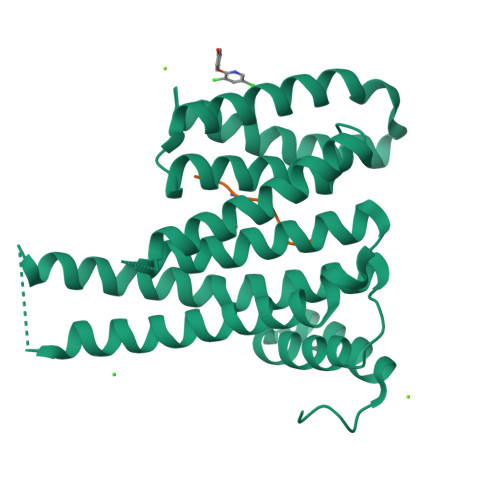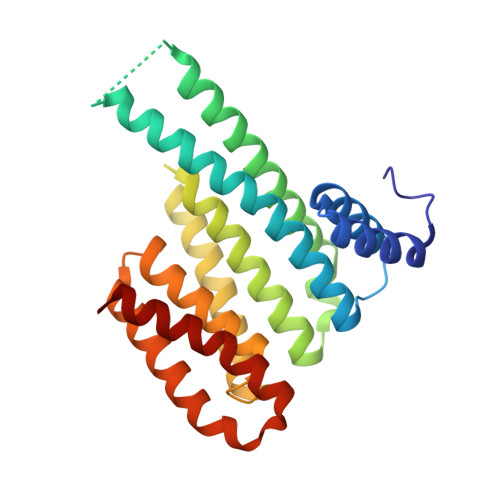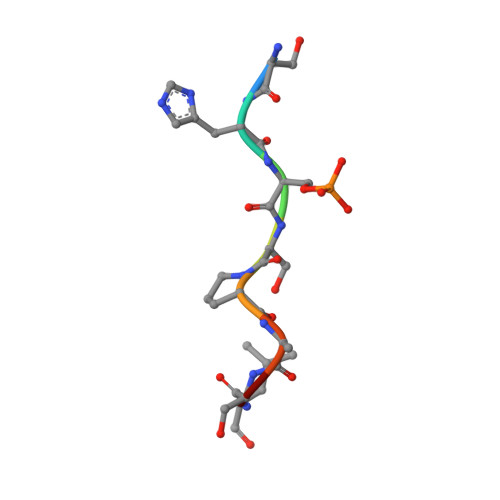Identification of Two Secondary Ligand Binding Sites in 14-3-3 Proteins Using Fragment Screening.
Sijbesma, E., Skora, L., Leysen, S., Brunsveld, L., Koch, U., Nussbaumer, P., Jahnke, W., Ottmann, C.(2017) Biochemistry 56: 3972-3982
- PubMed: 28681606
- DOI: https://doi.org/10.1021/acs.biochem.7b00153
- Primary Citation of Related Structures:
5N5R, 5N5T, 5N5W, 5N75 - PubMed Abstract:
Proteins typically interact with multiple binding partners, and often different parts of their surfaces are employed to establish these protein-protein interactions (PPIs). Members of the class of 14-3-3 adapter proteins bind to several hundred other proteins in the cell. Multiple small molecules for the modulation of 14-3-3 PPIs have been disclosed; however, they all target the conserved phosphopeptide binding channel, so that selectivity is difficult to achieve. Here we report on the discovery of two individual secondary binding sites that have been identified by combining nuclear magnetic resonance-based fragment screening and X-ray crystallography. The two pockets that these fragments occupy are part of at least three physiologically relevant and structurally characterized 14-3-3 PPI interfaces, including those with serotonin N-acetyltransferase and plant transcription factor FT. In addition, the high degree of conservation of the two sites implies their relevance for 14-3-3 PPIs. This first identification of secondary sites on 14-3-3 proteins bound by small molecule ligands might facilitate the development of new chemical tool compounds for more selective PPI modulation.
Organizational Affiliation:
Department of Biomedical Engineering, Laboratory of Chemical Biology, and Institute for Complex Molecular Systems, Eindhoven University of Technology , P.O. Box 513, 5600 MB Eindhoven, The Netherlands.























